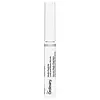What's inside
What's inside
 Key Ingredients
Key Ingredients

 Benefits
Benefits

 Concerns
Concerns

 Ingredients Side-by-side
Ingredients Side-by-side

Water
Skin ConditioningGlycerin
HumectantButylene Glycol
HumectantMyristoyl Pentapeptide-17
Skin ConditioningBiotinoyl Tripeptide-1
Oligopeptide-2
Skin ConditioningAcetyl Tetrapeptide-3
Skin ProtectingCaffeine
Skin ConditioningPanthenol
Skin ConditioningArginine
MaskingGlycine
BufferingGlycoproteins
Skin ConditioningLarix Europaea Wood Extract
HumectantTrifolium Pratense Flower Extract
AstringentCamellia Sinensis Leaf Extract
AntimicrobialDextran
Maltodextrin
AbsorbentZinc Chloride
AntimicrobialHydroxyethylcellulose
Emulsion StabilisingXanthan Gum
EmulsifyingTrisodium Ethylenediamine Disuccinate
Polysorbate 20
EmulsifyingSodium Metabisulfite
AntioxidantCaprylyl Glycol
Emollient1,2-Hexanediol
Skin ConditioningSodium Benzoate
MaskingBenzoic Acid
MaskingEthylhexylglycerin
Skin ConditioningPhenoxyethanol
PreservativeChlorphenesin
AntimicrobialWater, Glycerin, Butylene Glycol, Myristoyl Pentapeptide-17, Biotinoyl Tripeptide-1, Oligopeptide-2, Acetyl Tetrapeptide-3, Caffeine, Panthenol, Arginine, Glycine, Glycoproteins, Larix Europaea Wood Extract, Trifolium Pratense Flower Extract, Camellia Sinensis Leaf Extract, Dextran, Maltodextrin, Zinc Chloride, Hydroxyethylcellulose, Xanthan Gum, Trisodium Ethylenediamine Disuccinate, Polysorbate 20, Sodium Metabisulfite, Caprylyl Glycol, 1,2-Hexanediol, Sodium Benzoate, Benzoic Acid, Ethylhexylglycerin, Phenoxyethanol, Chlorphenesin
Water
Skin ConditioningCopernicia Cerifera Wax
Stearic Acid
CleansingHydrogenated Jojoba Oil
AbrasiveGlyceryl Stearate
EmollientAcacia Senegal Gum
MaskingGlycerin
HumectantOryza Sativa Bran Wax
Skin ConditioningOleic/Linoleic/Linolenic Polyglycerides
EmollientShorea Robusta Resin
TonicOctyldodecanol
EmollientSr-Hydrozoan Polypeptide-1
HumectantCellulose
AbsorbentPectin
Emulsion StabilisingHydrolyzed Vegetable Protein
Skin ConditioningXanthan Gum
EmulsifyingAminomethyl Propanol
BufferingSodium Benzoate
MaskingPhenoxyethanol
PreservativeEthylhexylglycerin
Skin ConditioningCI 77499
Cosmetic ColorantWater, Copernicia Cerifera Wax, Stearic Acid, Hydrogenated Jojoba Oil, Glyceryl Stearate, Acacia Senegal Gum, Glycerin, Oryza Sativa Bran Wax, Oleic/Linoleic/Linolenic Polyglycerides, Shorea Robusta Resin, Octyldodecanol, Sr-Hydrozoan Polypeptide-1, Cellulose, Pectin, Hydrolyzed Vegetable Protein, Xanthan Gum, Aminomethyl Propanol, Sodium Benzoate, Phenoxyethanol, Ethylhexylglycerin, CI 77499
 Reviews
Reviews

Ingredients Explained
These ingredients are found in both products.
Ingredients higher up in an ingredient list are typically present in a larger amount.
Ethylhexylglycerin (we can't pronounce this either) is commonly used as a preservative and skin softener. It is derived from glyceryl.
You might see Ethylhexylglycerin often paired with other preservatives such as phenoxyethanol. Ethylhexylglycerin has been found to increase the effectiveness of these other preservatives.
Glycerin is already naturally found in your skin. It helps moisturize and protect your skin.
A study from 2016 found glycerin to be more effective as a humectant than AHAs and hyaluronic acid.
As a humectant, it helps the skin stay hydrated by pulling moisture to your skin. The low molecular weight of glycerin allows it to pull moisture into the deeper layers of your skin.
Hydrated skin improves your skin barrier; Your skin barrier helps protect against irritants and bacteria.
Glycerin has also been found to have antimicrobial and antiviral properties. Due to these properties, glycerin is often used in wound and burn treatments.
In cosmetics, glycerin is usually derived from plants such as soybean or palm. However, it can also be sourced from animals, such as tallow or animal fat.
This ingredient is organic, colorless, odorless, and non-toxic.
Glycerin is the name for this ingredient in American English. British English uses Glycerol/Glycerine.
Learn more about GlycerinPhenoxyethanol is a preservative that has germicide, antimicrobial, and aromatic properties. Studies show that phenoxyethanol can prevent microbial growth. By itself, it has a scent that is similar to that of a rose.
It's often used in formulations along with Caprylyl Glycol to preserve the shelf life of products.
Sodium Benzoate is a preservative. It's used in both cosmetic and food products to inhibit the growth of mold and bacteria. It is typically produced synthetically.
Both the US FDA and EU Health Committee have approved the use of sodium benzoate. In the US, levels of 0.1% (of the total product) are allowed.
Sodium benzoate works as a preservative by inhibiting the growth of bacteria inside of cells. It prevents the cell from fermenting a type of sugar using an enzyme called phosphofructokinase.
It is the salt of benzoic acid. Foods containing sodium benzoate include soda, salad dressings, condiments, fruit juices, wines, and snack foods.
Studies for using ascorbic acid and sodium benzoate in cosmetics are lacking, especially in skincare routines with multiple steps.
We always recommend speaking with a professional, such as a dermatologist, if you have any concerns.
Learn more about Sodium BenzoateWater. It's the most common cosmetic ingredient of all. You'll usually see it at the top of ingredient lists, meaning that it makes up the largest part of the product.
So why is it so popular? Water most often acts as a solvent - this means that it helps dissolve other ingredients into the formulation.
You'll also recognize water as that liquid we all need to stay alive. If you see this, drink a glass of water. Stay hydrated!
Learn more about WaterXanthan gum is used as a stabilizer and thickener within cosmetic products. It helps give products a sticky, thick feeling - preventing them from being too runny.
On the technical side of things, xanthan gum is a polysaccharide - a combination consisting of multiple sugar molecules bonded together.
Xanthan gum is a pretty common and great ingredient. It is a natural, non-toxic, non-irritating ingredient that is also commonly used in food products.
Learn more about Xanthan Gum